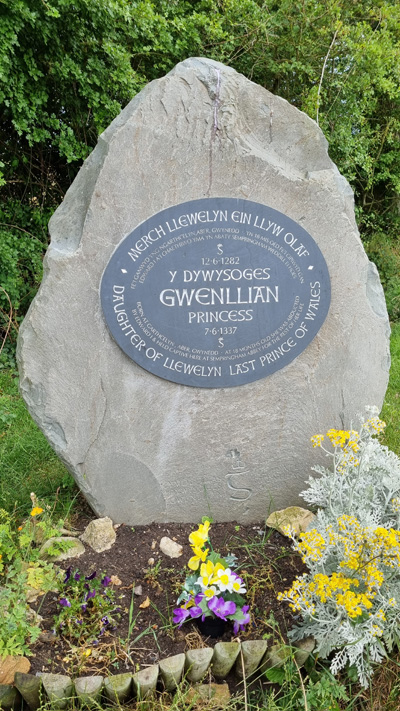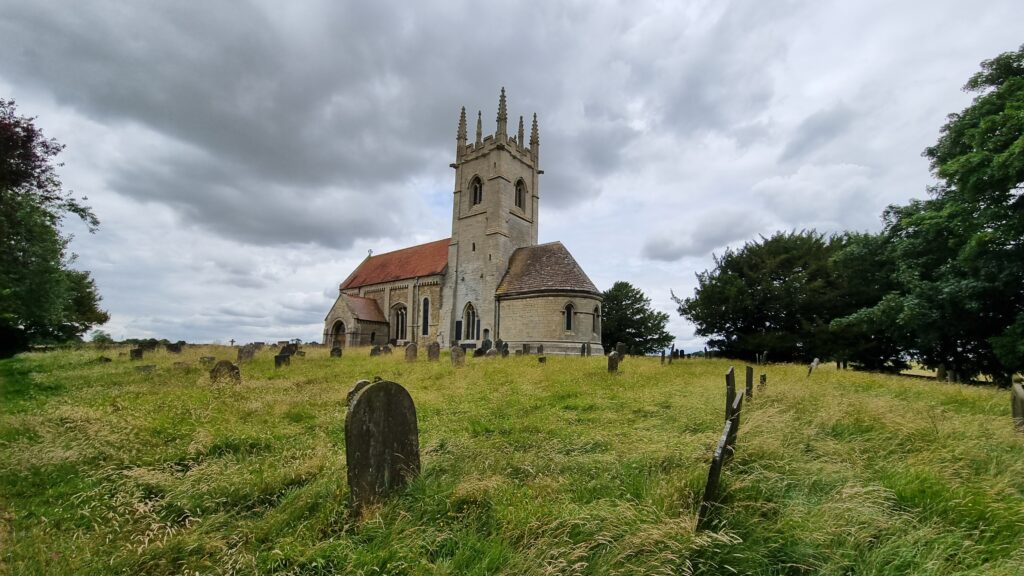
In Lincolnshire, where the limestone edge gives way to the fens, the map shows what looks to be an interesting place – the site of Sempringham Priory near Billingborough. Scattered with old paths, remnants of fishponds, a Holy Well and the old priory church, we decided that it would be worth exploring to find a few traces of the lives lived there long ago. What we did not expect was to find the resting place of the last Princess of Wales!
How did she come to end her days in a remote priory in Lincolnshire?
Here is the story of an infant princess, Gwenllian, whose mother died in childbirth, father killed in battle, and her abduction and removal to Lincolnshire. All this in the first year of her life.
Gwenllian was the daughter and only child of Llywelyn ap Gruffudd, the last “true” Prince of Wales, and Eleanor de Monfort. She was born Princess of Wales and heir to the Royal House of Aberffraw on 12th June, 1282.
These were dangerous times in Wales as the ambitions of Llywelyn and the King of England led to frequent clashes, and less than six months later her father was killed in battle against the English on 11th December 1282. Wales finally fell under the control of Edward I, and in a final humiliation for the Welsh, Edward retained the title of “Prince of Wales” for the English crown, later bestowed on his son.
A few months later the English forces succeeded in seizing the infant princess from her carers, but what to do with this Princess Gwenllian? She remained the true heir to the Welsh titles. To avoid provoking further rebellion Edward wanted to keep Gwenllian alive, but well away from Wales and the recently subdued Welsh nobles. More crucially, he wanted to prevent her from marrying and producing any heirs who might lay a legitimate claim to the Principality.
Edward decided that she would be shipped to the remote and obscure Gilbertine Priory at Sempringham. The Gilbertine Order was well chosen as the nuns in that order were kept hidden from outsiders behind the priory walls. There she would spend the rest of her life in seclusion and obscurity.

Did Gwenllian ever remember any fragments of the Welsh language, I wonder? Perhaps recalling a lullaby crooned as she slept? After all, she was barely a toddler when brought to Sempringham. It is said that she spelled her name as anglicised versions, Wentliane or Wencilian, so I suspect not.

Did she even know her true status? There’s a question. Again, I suspect that she did not. The priory certainly knew as they received a grant from the King. The Pope knew too, for he was asked to grant funds to the priory by the king, who said, “…herein is kept the Princess of Wales, whom we have to maintain”.
Edward III, Edward I’s grandson, endowed Gwenllian with a pension of £20 per year (£25,000 today). This was not paid to her, but to the priory for her food & clothing. Subsistence only and nothing more for a princess of the blood royal. Oh yes, apart from being Princess of Wales, she was also also, via her mother Eleanor, the great grand-daughter of King John I.
Her death here was recorded by the priory’s chronicler in June 1337, a few days before her 55th birthday. In 2001 the Gwellian Society erected a monolith of welsh granite with an inscription to her memory. By chance the stone viewed from behind reveals the silhouette of a nun, head bowed in prayer. Just coincidence, or a haunting presence?
The site today remains a lonely place, with the wind whispering through the trees and long grasses. The priory is long gone – just remnants in the church, a few humps and hollows and the remains of the old fishponds. And yet it is a wonderfully peaceful place.
I hope that Gwenllian found peace here too.
